The Gift of South Dakota
Subscriptions to South Dakota Magazine make great gifts!
Subscribe today — 1 year (6 issues) is just $29!
Heartbeat of Mother Earth
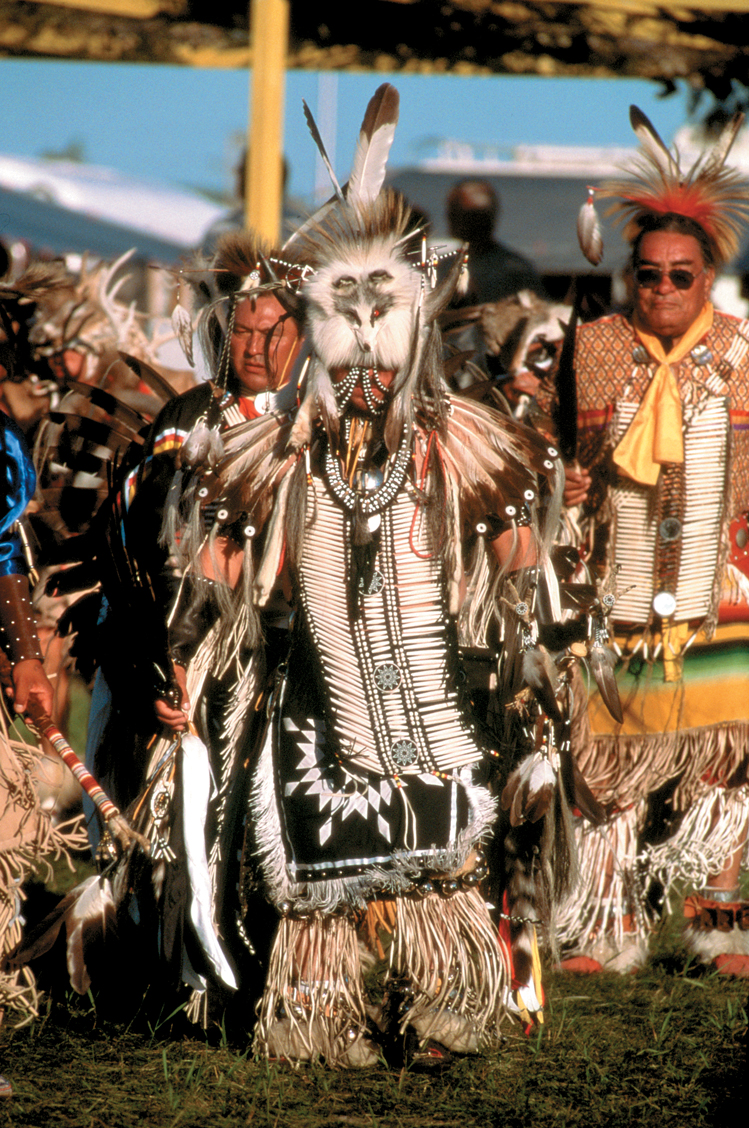 |
| Dancers relate to winged and four-legged relatives through bones, quills and feathers that adorn their regalia. Photo by Greg Latza. |
A pow wow is a living celebration of everything it means to be Native American. It would be difficult to find a cultural celebration that commands more meaning, history and devotion. The spiritual atmosphere of the pow wow is as pervasive as that of a Lutheran potluck dinner. The music and dance keep ancient traditions alive, and dancers prepare themselves with as much care as seniors for high school prom. Participants honor tradition at pow wows, but concede to modern life by driving there in cars and trucks. For non-Native Americans, imagine attending a family wedding, partying with hundreds of friends and family all dressed up in their finest clothes, dancing for hours, eating until it hurts. Then, when everything is over, you head to the next town to do it again next weekend. To repeat: pow wows are unique.
The history of American Indian dance and music stretches back thousands of years, but the pow wow as we know it is less than a century old. Pow wows slowly became organized events much like old displays of cowboy skills eventually evolved into rodeos. "Pow wow" is an Algonquin word referring to a specific medicine man dance. Whites then misapplied the word. "This term is far from universal," writes Bernard Mason in Dances and Stories of the American Indian. "Many tribes regarded the word as foreign to them. [However] in the popular parlance of today, any Indian dance or gathering is apt to be called a pow wow." In South Dakota, you may hear "wacipi" (translated as: "the people's dance") instead of pow wow.
There was a time, however, when neither term could be used. When United States soldiers forced Native Americans onto reservations, our government essentially banned American Indian culture. "They [pow wows] were outlawed for many years," said Earnest Wabasha, hereditary Chief of the Eastern Dakota Nation. However, Wabasha says, "There was no way they could've completely eliminated pow wows. The people just wouldn't let that happen. They would get together. They knew where secret places were and they let each other know by word of mouth and they would all show up there. Our culture and our traditions and our spiritual life, well our whole way of life, kept going that way."
To fool authorities, these meetings were sometimes disguised as celebrations of "white" holidays, like Independence Day. The Sisseton-Wahpeton Pow wow has occurred over the Fourth of July for 150 years, making it one of the longest running events in South Dakota and among the world's oldest established pow wows. Now, however, the date has more to do with the three-day weekend than with any secret agenda.
In summer, a pow wow takes place every weekend somewhere in the Midwest. Legions of dancers, singers, concession-stand vendors and fans follow this " Pow wow Circuit." Every weekend becomes a sort of family reunion where you see old friends, and make new ones — all the time reveling in a positive atmosphere.
The Drum
"One of the most important things in the life of a Native American is the drum," says Paul Gowder, who maintains the Pow Wow Dancing website. "Our whole culture centers around the drum. Without the drum and the singers around it, the Native Americans could not have pow wows. The drum brings the heart beat of our Earth Mother for all to feel and hear. Drumming brings everyone back into balance. Whether dancing, singing, or just listening, people around the drum can connect with the spirit."
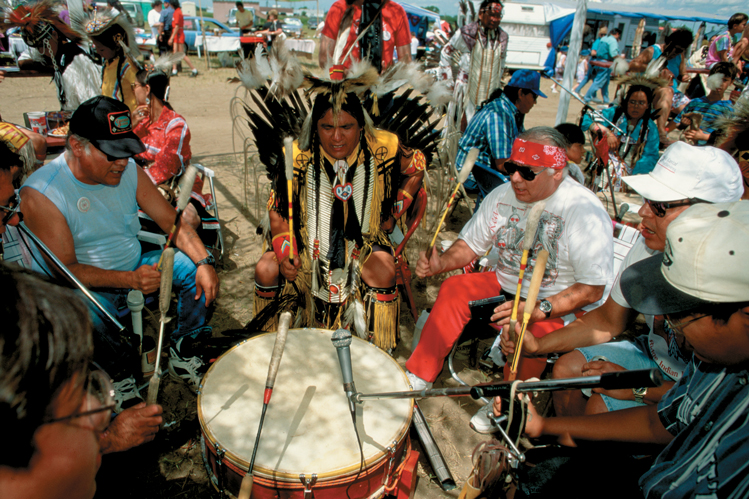 |
| The drum sets the pace at the Flandreau Pow wow, echoing the heartbeat of the sacred buffalo. Photo by Chad Coppess/S.D. Tourism. |
Strict rules are followed around the drum, whether it is a typical band bass drum or one with a traditional wooden frame and head of leather. The Head Singer enforces drum protocol. "Being Head Singer is a great honor," says Gowder. "The Head Singer has the first and last word and has complete control of what goes on at the drum. Songs are started with a lead line sung by the Head Singer. This lets the drum group and the dancers know what song is coming. After the lead line, the second (another person at the drum) will take up the lead line, and everyone will join in. At this point the dancers beg in to dance."
"Few non-Indian people recognize the importance of song to the American Indian," says George P. Horse Capture, author of Pow Wow. "Fewer still can detect the structure of our songs because they are vastly different from the European or 'American' ones. To the untrained ear all Indian songs may sound alike. One can understand this situation better by comparing 'hard rock' to 'disco.' To the untrained or unappreciative ear, they too sound alike; but their individuality is readily distinguished by connoisseurs of those styles. And so it is with Indian songs.
"Indian songs have few words; most songs have none. Years ago only the Sioux people favored wording. Most tribal songs use vowel-like sounds such as 'hey, yah, lay.' The exact 'vowels' are not as important as their tones or notes in the musical scale."
Historically, Sioux songs told stories of honor and bravery. Even without words, songs can still speak of legends in the feeling expressed. Other songs resemble modern pop music, simply pushing one to dance, dance, dance.
"Indian people have a unique musical system,” says Horse Capture. "There are no set rules of composition, no teachers and no concerts. Yet, like many aspects of our culture, the music has endured for many thousands of years."
Dancing
Centuries ago, when warriors returned from hunting and battle, they stopped outside their camps to make sure they looked their best. They wanted to arrive like the heroes they were. Later, they acted out their exploits in front of others. They performed certain movements to show hunting buffalo, stealing horses or killing an enemy. Eventually, these movements became accepted steps, and dancing evolved.
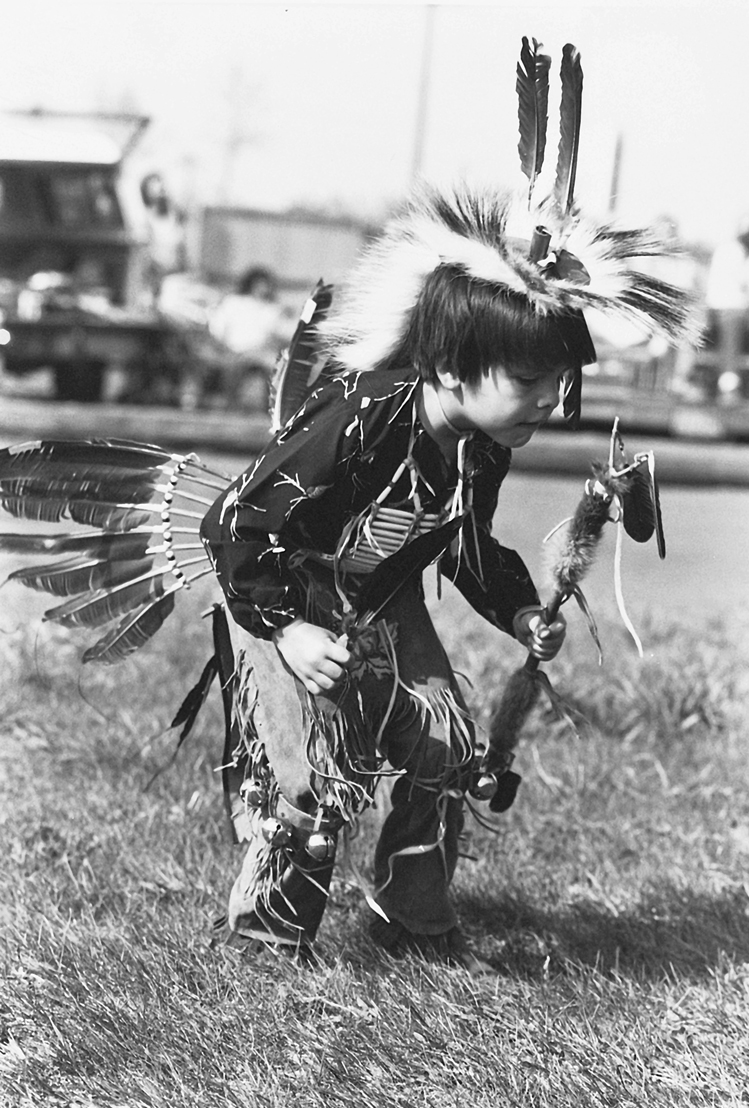 |
| Dancing connects the young to ancient traditions. Photo by Tom Nelson. |
Today's pow wow dances harken back to these ancient traditions. Men perform a grass dance, which is reminiscent of when warriors searched out new locations for campsites. At that time, tall prairie grass grew everywhere. Before setting up tipis, the grass had to be matted down, so warriors stomped and swayed in a grass-flattening dance. Those steps are still performed on the mowed grass and hardwood auditorium floors of modern pow wows.
Other dances arose from spiritual stories. A century ago, a medicine man at the Mille Lacs Reservation in northern Minnesota was told in a dream to put his gravely ill daughter in a dress decorated with chimes and to have her dance around a circle. The girl had to be carried the first time around. On the second loop, she walked with aid. On the third rotation, she was healed. This dance survives as the Women's Jingle Dress.
A jingle dress is made by rolling the lids of chewing tobacco cans into cones, then tying them onto the dress. A skilled dancer gets the cones clinking from knees to shoulders, making a sound like soft rain.
Men and women perform different dances. Men's categories are: Grass, Fancy, Straight and Traditional. Women perform Buckskin, Cloth, Fancy Shawl and Jingle Dress dances. Dancers are judged on their ability and regalia. They are grouped by sex, according to age, from seniors to "tiny tots."
All dancers, regardless of style, must stop precisely on the last drumbeat of the song. Dancers must be knowledgeable to sense when the end is coming. Bernard Mason points out that some dancers, “have an individual and distinctive way of ending a dance, a sort of personalized sign, a rhythmic signature. Knowing when the dance will end, they stop precisely on the final drumbeat, each with his own little flourish. With no song to indicate the ending, a louder beat of the drum can be used as a signal that in eight counts the drumming will stop. Each dancer then starts to write his signature in rhythm.”
At most pow wows you will see a special dance called a "giveaway." Native Americans judge a person's value by what they give away, not by what they accumulate. Giveaways honor a person by giving gifts to others in the honored person's name. Personal milestones, such as high school graduation, provide reasons for giveaways.
Regalia
Don't call what a dancer wears a "costume," in the sense that they are donning their clothes for a performance. Circus performers wear costumes. Dancers wear "pow wow dress" or "regalia."
Dedicated dancers on the pow wow circuit train like Olympic athletes in order to perform at top level every weekend. Still, they must pay as much attention to their regalia as they do to their muscles. Dancers constantly mend their dress because beads fall, buttons fly and feathers jostle while performing.
While each dance style requires specific regalia, there remain some common characteristics. Men wear a headdress called a "roach," made of porcupine quills. Around their necks are chokers, and on their chests are breastplates, both made of hairpipe or dentalium. Some prefer mirrors to breastplates. Dancers apply facial paint in a particular color and pattern to honor ancestors, or to accentuate personal power. Although some wear Nikes and Reeboks, beaded leather moccasins are preferred.
Women rely on one of two basic dresses: buckskin or cloth. They wear chokers or shawls around necks. Most carry fans or purses. Belts, colorfully beaded or shiny with brass tacks, hold traditional items like knife cases and pouches.
Men must be in full regalia to dance; women need only wear a shawl. "Perhaps the greatest area for creativity," says Horse Capture, "is their shawls. Spread across the back, the shawl is held by the ends." In geometric and floral patterns, women decorate shawls to express devotion to a reservation, a club, a symbol, a color, or an animal." It is mesmerizing to see all the girls do the same dance, but doing it with their own flair and own look."
All dancers share one characteristic: bells. "To the dancer, bells are well-nigh indispensable," says Mason. "Bells on one's ankles reinforce the drum. The custom goes back for we know not how long. Before the white man came the 'bells' of the dancing Indian were the dewclaws made of hoofs, often attached to turtle shells for louder sound. But once sleigh bells were to be had the Indians reached out for them avidly. Few things that the white man brought were received with such enthusiasm."
Grand Entry
Grand Entry marks the beginning of every pow wow, and it reflects the wonderful warrior entrance of old. A time of pomp and circumstance, the audience stands as all participants enter in order of importance. First to enter are veterans carrying flags. The Stars and Stripes is always there, usually next to an "Indian flag," which is a curved staff wrapped in buffalo hide, adorned with eagle feathers. Elders come next. Dancers, dressed in full regalia, enter led by Men's Traditional, followed by Men's Fancy, Women's Traditional and so on until, after around 30 minutes, everyone has entered.
Once everyone is in place, two songs are performed. The first is patriotic in nature, and may be "The Star Spangled Banner" sung in a Native tongue. The second is an honor song done in respect to the event. After an invocation by an elder, and sometimes a speech by a politician or a pow wow princess, the fun begins.
Pow wow Committee
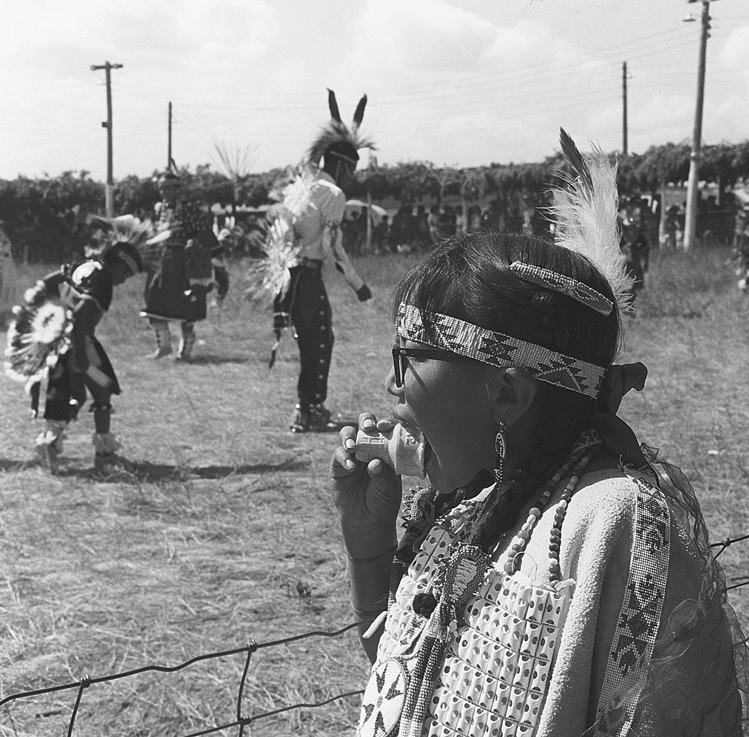 |
| Ice cream transcends all cultural boundaries, and sharing food is an important part of the social gathering. |
Each tribe appoints a committee to make sure the pow wow runs smoothly, and to extend hospitality. "We feed everyone at least one meal a day at no charge," says Lillian Wanna, board member for the Sisseton-Wahpeton Dakota Nation's annual pow wow. "We feel that when people come to an Indian home they shouldn't go hungry. We want to take care of everyone who is our guest. That’s why we feed people. We want to be good hosts." Both host and guest feel good, then, when everyone gets stuffed on roast beef, hot dogs, corn on the cob, buffalo or ethnic specialties like soup, Indian tacos, frybread and wojapi (a fruit pudding).
"It takes all year to organize our pow wow," says Wanna. "We start right away after the last one. The grounds need upkeep. We register and organize dancers and vendors. We make posters. And, of course, we raise funds. We do lots of raffles and dances and such. We might have almost 1,500 dancers and over four thousand people in the audience. That's a lot of mouths to feed, which means a lot of money to raise."
As tribal council secretary, Kenita Taylor handled nearly everything associated with the Cheyenne River Sioux Tribe Fair and Rodeo. Held annually over Labor Day, it features a four-day pow wow. "It takes me nearly six months after each pow wow just to pay the bills and post them and finish all the paperwork," says Taylor. "Then, right away, I start working on next year's event. I handle all the purchase orders. We order the oil cloth to label each dancer with numbers. We contract out portable toilets. And we handle camping. It fills up pretty well at the grounds. And, of course, we have to handle the arrangements to feed all the people."
The pow wow committee must also select their Master of Ceremonies. The emcee makes the event move along, provides running commentary, relates background information, reunites lost kids with parents and tells jokes. Each emcee has a different style: some are like history professors, and others like stand-up comics.
The most important decision a pow wow committee must make is whether to have a Contest or Traditional Pow wow. At contest pow wows, judges rule on dancing skill, regalia and song-knowledge, awarding money to the top-ranked participants. Prize money can be sizable. The nation's best competition dancers, such as Jonathan Windy Boy, make more than $50,000 a year by competing every week. A traditional pow wow offers day money (about $50) to all dancers and singers. Participants still perform their best, but the event carries a more laid-back feel.
Editor’s Note: This story is revised from the July/August 1999 issue of South Dakota Magazine. To order a copy or to subscribe, call (800) 456-5117.


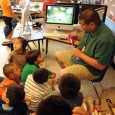
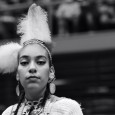
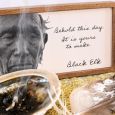
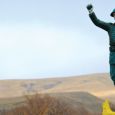
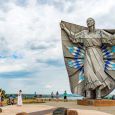



Comments